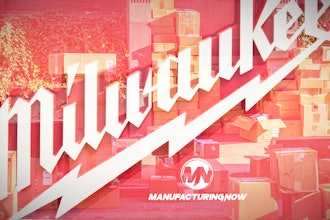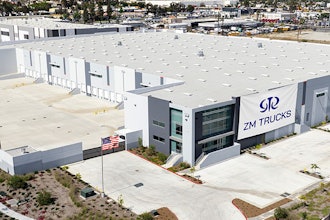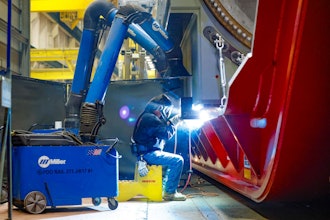Lean has become something of a buzzword in modern industrial "speak." In its purest sense, being a lean manufacturer means that ways have been found to eliminate the innumerable sources of "Muda" (a Japanese word for waste) that has historically pervaded the manufacturing enterprise.
So is now the time to sit back and reflect on a job well-done? Unfortunately not! While many companies have spent considerable time and effort making great strides in their lean journey, the improvements have often been focused at the factory level. Many of these same companies have overlooked the need to update the supporting functions that also impact outcomes and especially their bottom line.
What can occur is a lean factory living inside a non-lean business. Essentially, many of the supporting services…sales to estimating, order entry to engineering, purchasing to shop release, and even to critical post-manufacture activities such as labor and material reporting, profitability analysis, and data feedback are managed and measured in much the same way they were before the factory "changed."
Purchasing the old wayLet's focus on the purchasing organization, a critical support function, and one that is frequently left along the side of the road on a company's path to its lean destination.
Historically, purchasing organizations tended to be cloistered and modestly paid groups of people whose role in corporate life was to receive requests, place orders and to make sure the factory didn't run out of anything. Buyers often came from other functions where they were either judged good enough, or possibly bad enough, to earn a ticket for transfer into purchasing. Buyer training wasn't necessary as anyone could buy. "Selling," as any company executive could tell you (because they often rose from the ranks of Marketing or Sales) was the critical skill that required expensive training, buying was not.
In those good old days, companies proudly maintained giant inventories of "safety stock," had dramatic levels of work-in-process, piled unusable items out of sight for possible later scrutiny, and threw hoards of people at any problem. Very little mattered except being able to keep churning out salable products for product-hungry consumers. Profits were high and the world seemed very good!
For reasons that should be obvious, it doesn't work that way anymore!
Unfortunately, there are still purchasing organizations, particularly in many small- to medium-sized companies that operate and buy in much the same way they did 50 years ago. They apply the same "3-bid" mentality and a "we know what's best" approach that only the forgiving times of 30% and 40% profit margins could still accommodate.
They have somehow managed to avoid the impact of lean thinking and have only altered lot sizes and delivery patterns of what they buy to accommodate the new demands of the now-leaner shop, although often at a significantly higher price. Their employers have not required them to learn how to eliminate waste (usually embedded in antiquated processes) and become a lean purchasing organization that can support the lean factory at lower, instead of higher, costs.Today's most successful businesses…whether small, medium or big, know the concepts and benefits of rock-bottom 3rd decimal point pricing, global sourcing, integrated supply chains, on-site supplier services, phased deliveries, risk-sharing, and consistently acceptable quality. This is the domain of Strategic Procurement.
Consider that manufacturing companies typically spend 40% to 50% of their entire sales revenue on purchased goods and services. Companies that primarily assemble components often exceed a 60% figure. For this reason, outdated procurement practices practically guarantee bad financial results. Conversely, great lean-based procurement can dramatically improve company operations and financial outcomes.
Today, successful procurement requires that the purchasing organization act in lock-step with the goals of the organization. It serves little purpose for a purchasing organization to achieve impressive internal measurements if it doesn't also satisfy key business objectives.
Procurement is the new way"Strategic Procurement" is the name of the new game. Purchasing has outgrown its day-to-day tactical roots and blossomed into a true strategic function with the added requirement of coordinating with its primary customer, an increasingly lean manufacturing operation. Every company, and particularly every manufacturing company, would be wise to position its purchasing organization as a powerful weapon in its arsenal to achieve its financial objectives. The goals and measurements of the purchasing organization must be fully integrated into the objectives of the company, not treated as a separate endeavor that lets purchasing appear to succeed while the company around it fails.
A side benefit of Strategic Procurement practices is that it enables the reduced purchasing staffs at many companies to accomplish more by negotiating better deals with fewer suppliers. The process focuses on the pricing and content of comprehensive long-term agreements, not on the success of repetitive small purchases. Buyers can achieve outcomes that far surpass the old tactical "need-bid-buy-invoice-pay & repeat" process.
The obvious question becomes…"what do I have to do to be sure a company's purchasing organization is strategic in focus and lean in operation?" Well...it may not be easy, but here's the answer.
The strategic buyer
Most Buyers are very capable at performing the mechanics of the buying process. They can expertly manage screens on their company's purchasing or enterprise data system. From a glance at the screen or a report, Buyers are told what to buy next, its "standard" cost, and what has to be keyed-in to keep the system satisfied. While these Buyers expertly manage the nuts and bolts of this scorekeeping process, they often lack the specific business, purchasing and negotiating skills expertise that would help them and their companies more successfully compete in the 21st century.
Consider that the majority of salespeople, and especially those high-achievers who have survived repeated staff cutbacks, are well-trained and really know the techniques of selling. They believe that a trained seller can "overpower" an untrained buyer every time. A key question is whether Buyers are as well-equipped to meet their sales counterparts and produce great strategic deals that support the Lean objectives of their company, as they are to phone-in orders and plead for critical items they need the next morning. The answer in too many cases, is “no.”
If simply to protect the huge amount of company dollars flowing through the Purchasing organization, it makes perfect sense for Buyers and their management to be well-trained in how to support the strategic objectives of the enterprise. Every Buyer must fully understand the implications of their actions in the financial scheme of things. They must understand strategy, how to negotiate for what needs to be achieved, and know the processes and techniques inherent in a lea

















